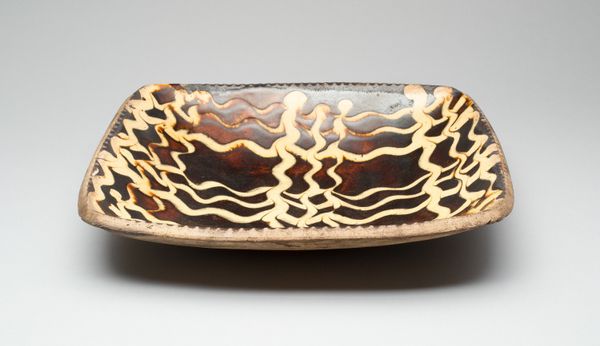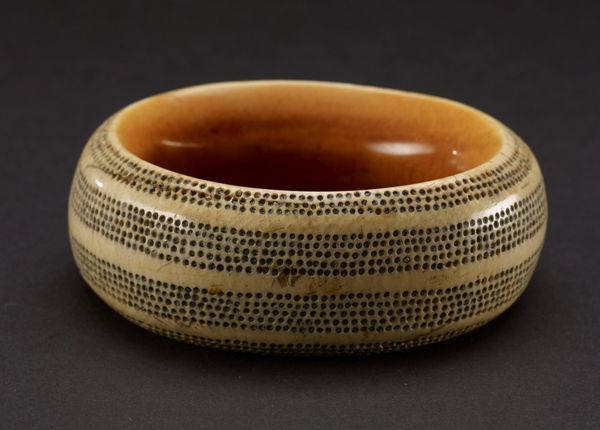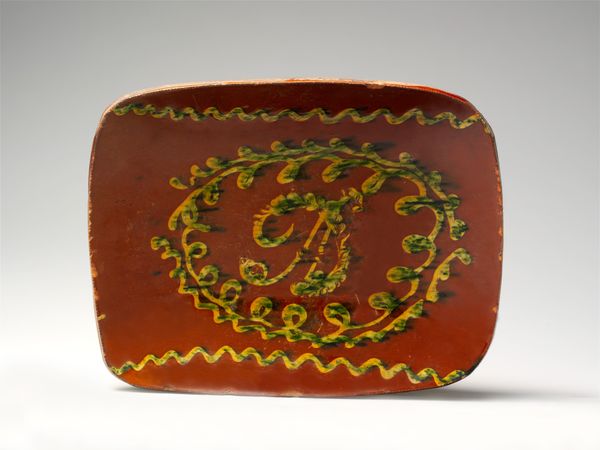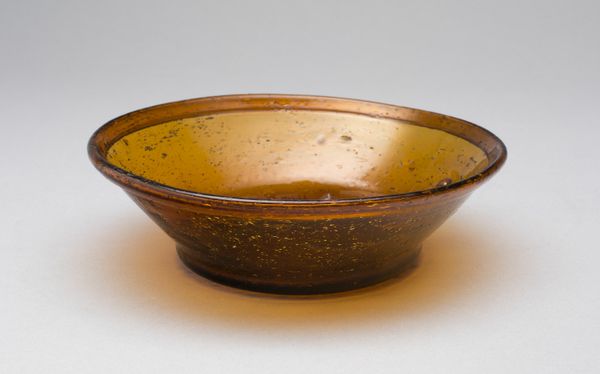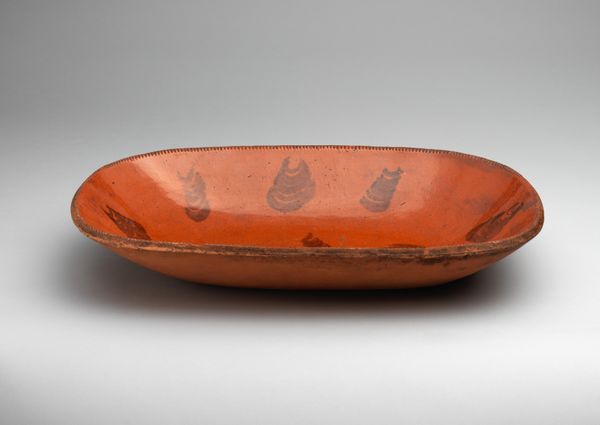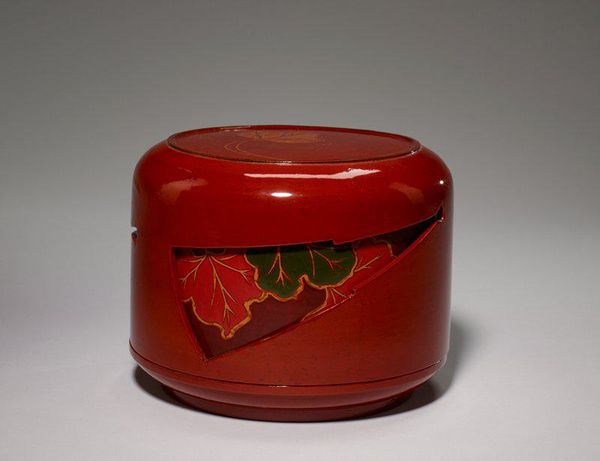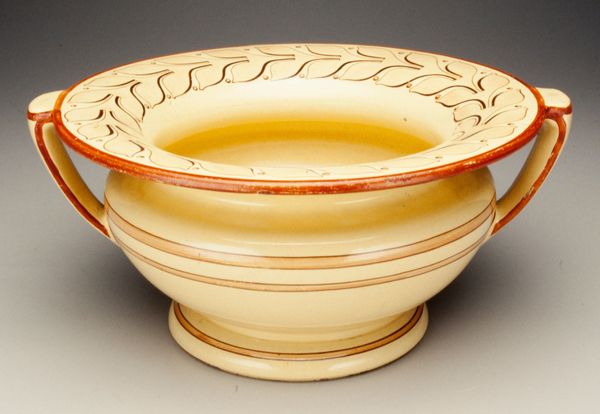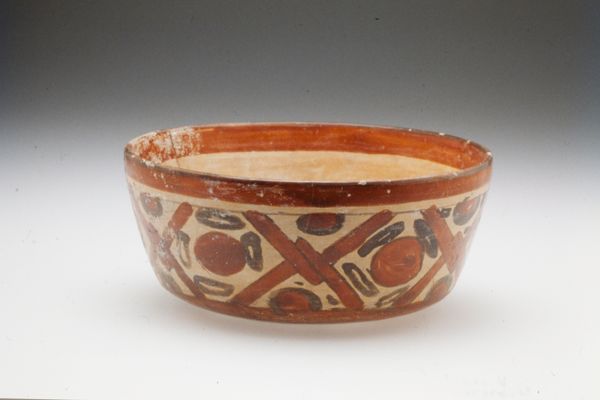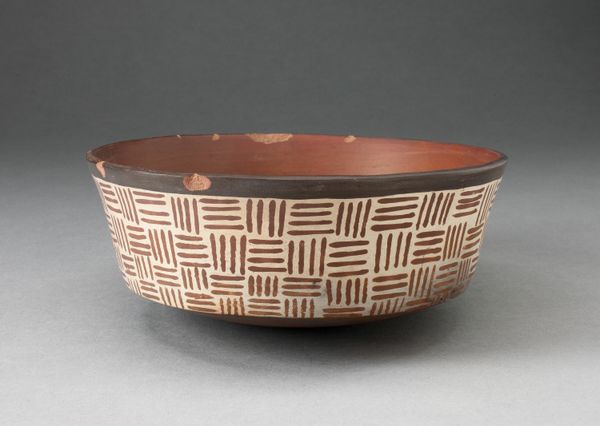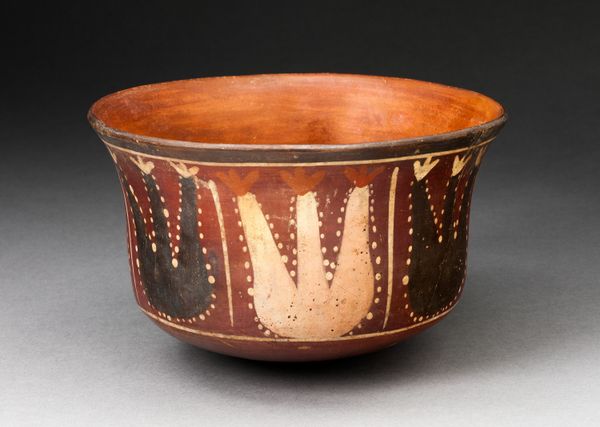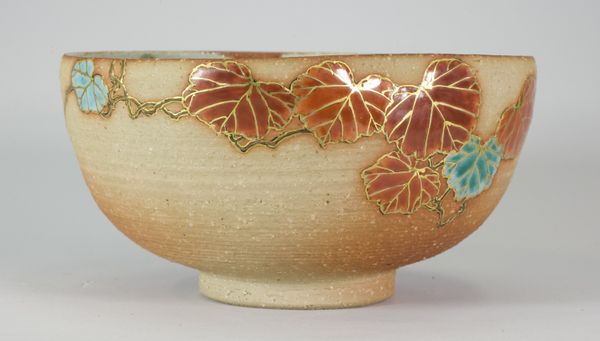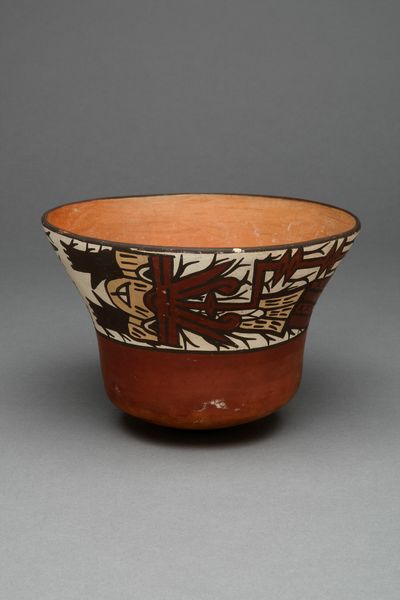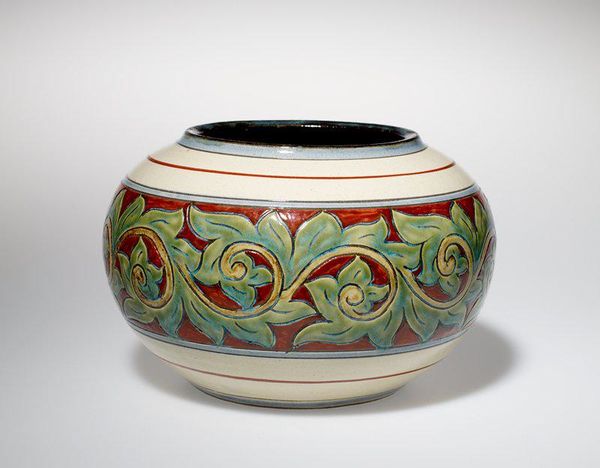
ceramic, earthenware
#
ceramic
#
earthenware
#
decorative-art
Dimensions: 38.8 × 26 × 9.5 cm (15 1/4 × 10 1/4 × 3 3/4 in.)
Copyright: Public Domain
Curator: The work we're looking at is a charming earthenware dish, likely dating from between 1790 and 1860. It is held here at the Art Institute of Chicago. Editor: My immediate impression is one of earthiness. The orangey-red background gives it a warm, almost sun-baked quality. It feels very connected to the materials and processes of its making. Curator: Precisely! The dish is an exquisite example of ceramic production. Note how the materiality dictates form and design: the earthenware shaping its function, decorated simply and practically with wavy yellow lines that seem to mimic the movement of a potter's wheel or brushstrokes. This wasn’t high art; this was about the honest application of skills and the provision of everyday necessities. Editor: And those lines...to me, they aren't merely decorative. The repeated wave patterns, perhaps stylized depictions of water, might be symbolic – rebirth, the constant flow of time. The rustic charm is palpable; the piece invites associations to a rural, bygone era. Were such colors prevalent and intentional at that time? Curator: While dating is not precise, these sorts of earthy, ochre tones would have been common depending on where the dish was crafted – such hues resulting from iron oxides present in the clay or the glazes employed. These were accessible materials; the maker working *with* the local geology. The repeated linear and wavy ornamentation is likely rooted in utilitarian design— simple for the maker and visually pleasant for the user. Editor: It makes you wonder what purpose this dish served. Ritual, feast, family meal? The humble object holds echoes of life, even unspoken longings. There is perhaps some unrepeatable charm when form perfectly aligns with function. Curator: Indeed, it underscores how profoundly techniques can transform common substances. The dish itself might well reflect the very society and environment in which it was made – reflecting the availability and quality of natural resources at hand and how these were implemented within contemporary life. Editor: Looking at the work from both our angles is instructive, considering function *and* spirit. Curator: Yes, for something like this to resonate in this modern era surely suggests more than the skill involved in producing it.
Comments
No comments
Be the first to comment and join the conversation on the ultimate creative platform.
